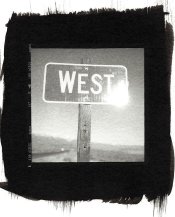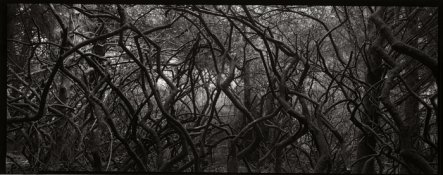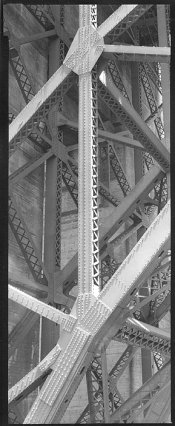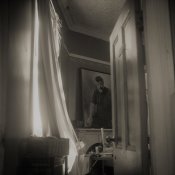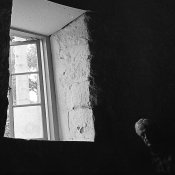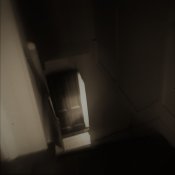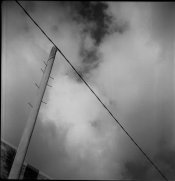I just came back from the Irving Penn: Beyond Beauty show in San Diego and I'd guess that 2/3 or more of the images were square.
-
Welcome to Photrio!Registration is fast and free. Join today to unlock search, see fewer ads, and access all forum features.Click here to sign up
You are using an out of date browser. It may not display this or other websites correctly.
You should upgrade or use an alternative browser.
You should upgrade or use an alternative browser.
Do you go in for square comps?
-
- Thread starter slackercrurster
- Start date
Recent Classifieds
-
For Sale Four H&Y Magnetic 4" Filter Holders and Four Cokin B&W Contrast Filters
- Started by Steve Goldstein
-
For Sale Schneider Kreuznach Super-Angulon 165mm - 8x10
- Started by Guivd
-
For Sale 28mm F2.8 Zuiko for Olympus OM SLR - Excellent Condition
- Started by davela
-
For Sale Nikon Coolscan 8000/9000 film holders - FH-869G, FH-869S, FH-835M
- Started by radialMelt
-
For Sale Mamiya 6 medium format rangefinder - late model, body only
- Started by radialMelt
Forum statistics
There are many equally valid ways to approach image-making - from the starting point of composition or from a spark of stimulation...from an idea, or from the subject itself.
I do not crop or enlarge, nor do I dodge/burn. Thus, my compositions are tied directly to my ability to see, the format and the subject. They are not separated. In a world of infinite possible images, always printing full-frame, by definiton, is never limiting. The only limitation would be in the vision of the photographer.
Well I'd have nothing if that was the case. 99.99% of my work is cropped, dodged and burned. The only work that is not are throw away snapshot type of pix. I think every great photog at least dodged or burned. W. Eugene Smith used to paint on potassium ferrocyanide to bleach the photos. Some used 'hot' developer to bring out more details.
Last edited:
+1Well I'd have nothing if that was the case. 99.99% of my work is cropped, dodged and burned. The only work that is not are throw away snapshot type of pix. I think every great photog at least dodged or burned. W. Eugene Smith used to paint on potassium ferrocyanide to bleach the photos. Some used 'hot' developer to bring out more details.
The creative process doesn't stop when the shutter is tripped.
+1
The creative process doesn't stop when the shutter is tripped.
The creative process IS often frozen by pighead determination to force something potentially worthwhile into a cameras format...along with fussy refusal to crop.
What was it that, that grumpy old fart some people here like to idolize once said, something about the neg being the score and the picture being the performance?
I love editing, Im really bad at it, but I persevere. To me the most difficult part of photography to master, both in camera and printing.
I love editing, Im really bad at it, but I persevere. To me the most difficult part of photography to master, both in camera and printing.
Last edited:
- Joined
- Nov 13, 2003
- Messages
- 5,706
This would be the photrio circle of life. Someone mentions cropping, someone says compose to the format, cropper gets their panties in a wad, composer gets theirs’ in a bunch the circle is complete and dead horse whipping goes until one or the other gets the final word only because they flogged it the longest.
Do what you do and be happy with it.
Do what you do and be happy with it.
Last edited:
AA's quote is only a big deal if one separates the composer and the performer. I feel no separation in those roles. Perhaps what you call editing is what I call Seeing. Just different ways of approaching image-making. The work many people do when printing (cropping, burning/dodging and other creative controls) I just do earlier in the process when looking at the light, setting up the camera, and then exposing/developing the negative to fit the qualities of my hand-made photographic processes. And then more control when printing in those hand-made processes themselves. Along the way, I am exercising as much creative control over the final result as anyone cropping, burning, dodging, toning, etc to make a silver gelatin print.What was it that, that grumpy old fart some people here like to idolize once said, something about the neg being the score and the picture being the performance?
I love editing, Im really bad at it, but I persevere. To me the most difficult part of photography to master, both in camera and printing.
Hopefully not a case of being fussy or pig-headed -- otherwise I'd be tempted to make rude comments about silver gelatin printers lack of creativity in using boring store-bought paper, LOL!

Attachments
AA's quote is only a big deal if one separates the composer and the performer. I feel no separation in those roles. Perhaps what you call editing is what I call Seeing. Just different ways of approaching image-making. The work many people do when printing (cropping, burning/dodging and other creative controls) I just do earlier in the process when looking at the light, setting up the camera, and then exposing/developing the negative to fit the qualities of my hand-made photographic processes. And then more control when printing in those hand-made processes themselves. Along the way, I am exercising as much creative control over the final result as anyone cropping, burning, dodging, toning, etc to make a silver gelatin print.
Hopefully not a case of being fussy or pig-headed -- otherwise I'd be tempted to make rude comments about silver gelatin printers lack of creativity in using boring store-bought paper, LOL!
Can call it what you like, but what AA did and others do to me is just a continuation. Every choice you make from camera, lens, film, filter, time of day, etc. will effect the way the picture looks, if you chose to continue on a computer editor or in the darkroom its all OK......providing your making prints, other wise your just a wanna be

It is difficult to make a good print, Ive only been trying for a couple of years and think it will take many more to do it well.
And when I make Vandyke Brown contact prints from negatives made by my homemade 14x17 pinhole camera I will dodge, burn and mask in the hot sun to make the picture I want.....well at least try to.
AA's quote is only a big deal if one separates the composer and the performer. I feel no separation in those roles. Perhaps what you call editing is what I call Seeing. Just different ways of approaching image-making. The work many people do when printing (cropping, burning/dodging and other creative controls) I just do earlier in the process when looking at the light, setting up the camera, and then exposing/developing the negative to fit the qualities of my hand-made photographic processes. And then more control when printing in those hand-made processes themselves. Along the way, I am exercising as much creative control over the final result as anyone cropping, burning, dodging, toning, etc to make a silver gelatin print.
Hopefully not a case of being fussy or pig-headed -- otherwise I'd be tempted to make rude comments about silver gelatin printers lack of creativity in using boring store-bought paper, LOL!
Dunno, I don't get into all that. Sure, I got lots of extreme views. But my views always bow down to getting the shot...any way you can and whatever it takes.
I'm going through another group of the Strand bookstore shots I did. They all have exposure issues. You cannot do good candid work if you are constantly taking readings and adjusting your cam. You turn in 4 directions and you got 4 different exposures. Time is also an issue. When short on time, hard to be super exacting, test shots, etc. That is the purview of the landscaper. Time flies, in a blink of the eye or two, the photo is gone for street or doc work.
Can call it what you like, but what AA did and others do to me is just a continuation. And I just load up the composition and where & what light values will be in the print at the front end of the process. All equally groovy.
It is difficult to make a good print, Ive only been trying for a couple of years and think it will take many more to do it well. It has been over 40 years and that is still my goal...the goal posts just seem to move further away everytime one learns something.
And when I make Vandyke Brown contact prints from negatives made by my homemade 14x17 pinhole camera I will dodge, burn and mask in the hot sun to make the picture I want.....well at least try to. Great! I once used a Sharpie on the contact printing frame's glass tp dodge a small area when making carbon prints. I am not a purist. I spent quite a few years dodging and buring silver prints...loved it, it was as much fun and part of the creative process as taking the photo.
carbon print, 4x10
Attachments
It's always puzzled me why most photographers are locked into horizontal format. Especially strange for landscape photographers who, I would have thought, looked up and down as readily as sideways.
The creative process IS often frozen by pighead determination to work/think like everyone else works and thinks.The creative process IS often frozen by pighead determination to force something potentially worthwhile into a cameras format...along with fussy refusal to crop.
I have used cropping. burning and dodging to create photographs for many years. I am quite familiar with those tools. Have you spent any significant amount of time and effort creating work without burning/cropping/dodging? It is a good exercise to do for a few years. Why limit oneself to one viewpoint?
4x10 carbon print:
Attachments
Last edited:
Square Magazine
http://www.squaremag.org/
http://www.squaremag.org/
Sirius Glass
Subscriber
This would be the photrio circle of life. Someone mentions cropping, someone says compose to the format, cropper gets their panties in a wad, composer gets theirs’ in a bunch the circle is complete and dead horse whipping goes until one or the other gets the final word only because they flogged it the longest.
Do what you do and be happy with it.
Nice summary, thank you.
If in the end the goal is to create the best looking image, then why would anybody refuse to use the tools available to accomplish exactly that? Compose as best as you can before you take that photo. Expose the film (or sensor) as best as you can accomplish. Adjust in the darkroom or on a computer to correct your errors or to overcome limitations in the scene,your camera or your skill. Crop and print in the layout that you want in order to get that image looking it's absolute best. Why someone would deliberately ignore available tools and techniques is beyond me.
You make the assumption that my prints (without cropping, etc) are not already at their absolute best...

Last edited:
If in the end the goal is to create the best looking image, then why would anybody refuse to use the tools available to accomplish exactly that? Compose as best as you can before you take that photo. Expose the film (or sensor) as best as you can accomplish. Adjust in the darkroom or on a computer to correct your errors or to overcome limitations in the scene,your camera or your skill. Crop and print in the layout that you want in order to get that image looking it's absolute best. Why someone would deliberately ignore available tools and techniques is beyond me.
I'm somewhat sympathetic with people who do restrict themselves Vs tools/techniques... That can be a useful discipline, however I don't think it's the absolute moral issue of some folks.
Beautiful, Paul. I like how a couple of them show how nothing can be the center of attention -- something a little more difficult to carry off with the 5x7, where its longer proportions allows the eye to sweep (horizontally or vertically) by nothing, so to speak.
I guess thats why they call horizontal Landscape, you are generally following the lines of the horizon, unless your doing a tree, stream, waterfall, building etc.where you can utilize vertical. Vertical landscape is tricky, you need to brake it up so the horizon is less important, even tricker if the horizon is flat. I often try but seldom succeed. Do you have any examples, that dont follow up and down lines?It's always puzzled me why most photographers are locked into horizontal format. Especially strange for landscape photographers who, I would have thought, looked up and down as readily as sideways.
A Holga shot, but kinda illustrates what I mean.
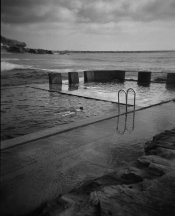
Thanks Vaughn, if I keep practicing I might get to your standard, although I might be a bit rickety in 40 years time.Beautiful, Paul. I like how a couple of them show how nothing can be the center of attention -- something a little more difficult to carry off with the 5x7, where its longer proportions allows the eye to sweep (horizontally or vertically) by nothing, so to speak.
Defiantly one of square formats strengths, the eye goes round and round.
Probably for the same reason most people don't crop circular or triangular landscapes - the horizontal format just works.It's always puzzled me why most photographers are locked into horizontal format. Especially strange for landscape photographers who, I would have thought, looked up and down as readily as sideways.
Sirius Glass
Subscriber
Thanks Vaughn, if I keep practicing I might get to your standard, although I might be a bit rickety in 40 years time.
Defiantly one of square formats strengths, the eye goes round and round.
That is why I find the horizontal and vertical lines on the view finder screen useful.
Thanks for the tip, no such lines on my Argus 75, was going to draw a smiley face on the screen so it would have facial recognition so I would know if there were people around to photo, so others would get off my back for rarely having any people in my pictures. Could have both but then the smiley face would be in a cage and be sad. Also shouldn't photo when having vertigo.That is why I find the horizontal and vertical lines on the view finder screen useful.
Seriously lines are important, but sometimes I like to play with there orientation. Im always intrested in different perspectives.
I love the square because for me it will always be the album cover. The circle of vinyl protected by the square image. I prefer 6x6 cameras to compose using the whole frame for albums i never had the talent to compose.
I do have 8x10 framelines on my focus screens but primarily print the square as it’s captured. The exceptions tend to be ‘big dead sky’ landscapes that aren’t particularly musical.
I do have 8x10 framelines on my focus screens but primarily print the square as it’s captured. The exceptions tend to be ‘big dead sky’ landscapes that aren’t particularly musical.

| Photrio.com contains affiliate links to products. We may receive a commission for purchases made through these links. To read our full affiliate disclosure statement please click Here. |
PHOTRIO PARTNERS EQUALLY FUNDING OUR COMMUNITY:  |


